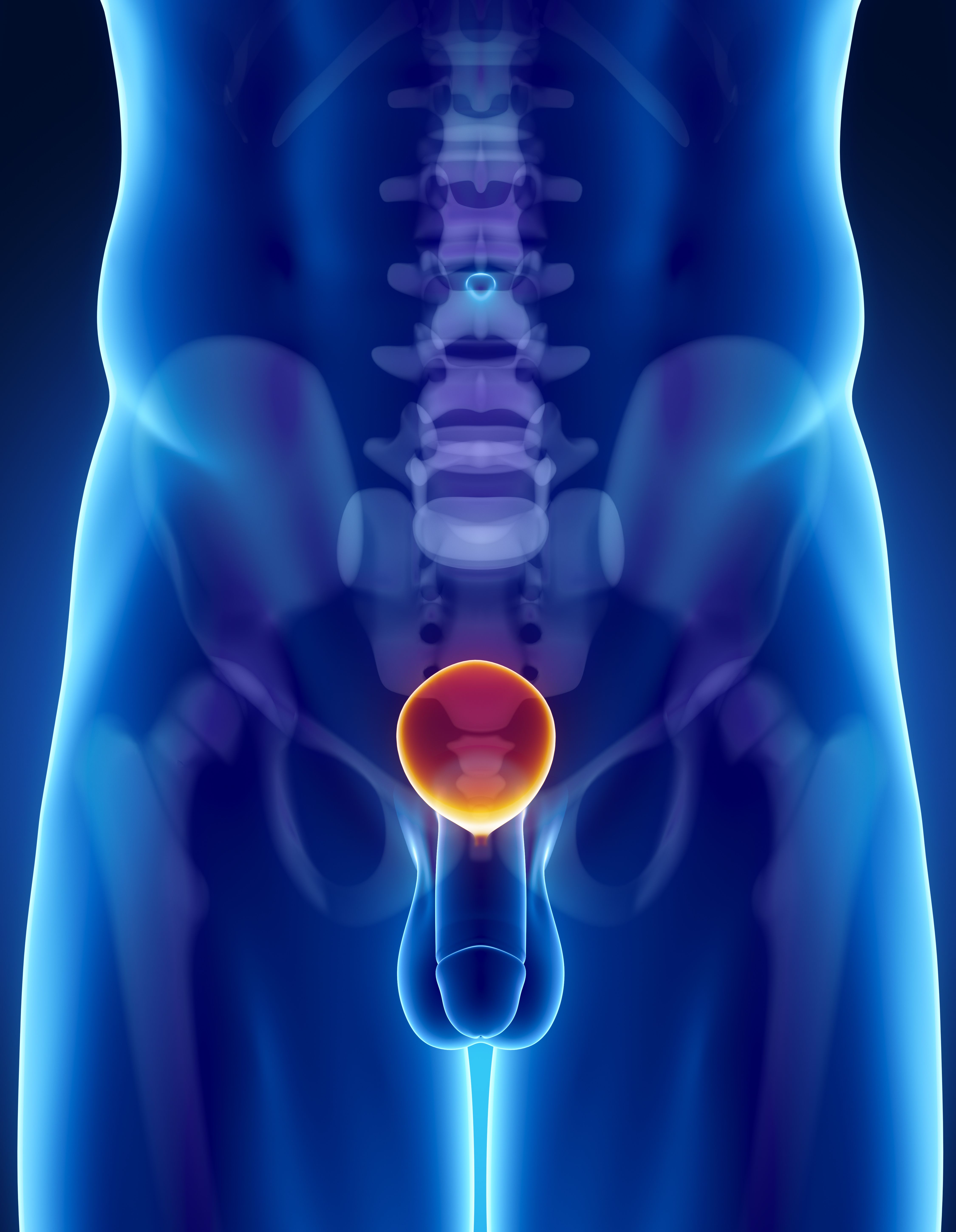Docetaxel/Darolutamide Plus ADT Limits High-Grade AEs in Metastatic HSPC
Updated safety findings may support the ARASAFE regimen as a potential standard of care in metastatic hormone-sensitive prostate cancer.
"In summary, ARASAFE demonstrates a statistically highly significant and clinically meaningful reduction in the incidence of grade 3 to 5 adverse event rate and the rate of grade 3 to 4 neutropenia or death regardless of reason for the experimental approach," according study investigator Marc-Oliver Grimm, MD.

Statistically significant and clinically meaningful reductions in grade 3 to 5 adverse effects (AEs) and grade 3/4 neutropenia or death of any reason occurred among patients with metastatic hormone-sensitive prostate cancer who received an alternative regimen of docetaxel plus darolutamide (Nubeqa) and androgen deprivation therapy (ADT), according to findings from the phase 3 ARASAFE trial (NCT05676203) presented at the European Society for Medical Oncology (ESMO) Congress 2025.1
The findings were presented by Marc-Oliver Grimm, MD, professor and chair of urology at Jena University Hospital in Jena, Germany.
By way of background, Grimm explained that the use of ADT, darolutamide, and docetaxel is FDA approved for patients with mHSPC based on findings from the phase 3 ARASENS trial (NCT027996602). In that regimen, the docetaxel dosage is 75 mg/m2 once every 3 weeks. However, Grimm pointed out that toxicity such as neutropenic complications could limit the use of this regimen compared with androgen receptor pathway inhibitor/ADT doublet therapy. For ARASAFE, Grimm and his co-authors sought to evaluate toxicity in triplet therapy with darolutamide/ADT/docetaxel with docetaxel dosages of 50 mg/m2 once every 2 weeks and 75 mg/m2 once every 3 weeks.
“We hypothesized that triplet therapy with darolutamide, ADT, and 50 mg[/m2] every 2 weeks reduces grade 3 to 5 adverse events compared to the standard 75-mg[/m2] schedule,” Grimm said. Grimm also pointed to previous research indicating that ADT plus docetaxel 50 mg/m2 once every 2 weeks was associated with better time to treatment failure and fewer grade 3-4 AEs in patients with metastatic castration-resistant prostate cancer.3
In ARASAFE, a total of 250 patients with mHSPC were randomly assigned 1:1 to darolutamide 600 mg twice daily plus ADT plus 6 cycles of docetaxel 75 mg/m2 once every 3 weeks (3-week cycle, 129 patients) or to darolutamide 600 mg twice daily plus ADT plus 6 cycles of docetaxel 50 mg/m2 once every 2 weeks (4-week cycle, 121 patients). Total expected docetaxel dose was 450 mg/m2 in the 75 mg/m2 arm vs 600 mg/m2 in the 50 mg/m2 arm.
Primary end points included grade 3-5 AEs and grade 3-4 neutropenia or death of any reason. Secondary end points included time to castration resistant prostate cancer, overall survival, time to pain progression, time to first symptomatic skeletal event, time to initiation of subsequent systemic antineoplastic therapy, time to worsening of disease-related physical symptoms, and quality of life.
Median age at baseline was 68.0 years (interquartile range [IQR], 63.0-74.0 years) in the 75 mg/m2 arm vs 67.0 years (IQR, 63.0-73.0 years) in the 50 mg/m2 arm. High-volume disease was present in 108 (83.7%) patients in the 75 mg/m2 arm vs 104 (86.0%) patients in the 50 mg/m2 arm. Mean number of docetaxel doses was 5.6 (standard deviation [SD], 1.1) in the 75 mg/m2 arm vs 10.7 (SD, 2.2) in the 50 mg/m2 arm. Mean cumulative docetaxel dose was 842.8 mg (SD, 181.7 mg) in the 75 mg/m2 arm vs 1073.5 mg (SD, 240.4 mg) in the 50 mg/m2 arm.
Grimm reported that the study reached its primary end points: The grade 3-5 AE rate was 78.9% (95% CI, 70.8-85.6) in the 75 mg/m2 arm vs 61.2% (95% CI, 51.9-69.9) in the 50 mg/m2 arm (P =.0024). Additionally, the grade 3-4 neutropenia/death of any reason rate was 64.1% (95% CI, 55.1-72.3) in the 75 mg/m2 arm vs 24.0% (95% CI, 16.7-32.6) in the 50 mg/m2 arm (P < .00001).
Grimm also reported that the rates of neutropenia, leukopenia, and febrile neutropenia favored the 50 mg/m2 dosage over the 75 mg/m2 dosage.
The investigators utilized prostate-specific antigen (PSA) response at week 26 as a putative surrogate for oncologic outcome. Grimm reported that the median PSA level in the 75 mg/m2 arm was 0.16 ng/mL (IQR, 0.03 ng/mL-1.00 ng/mL) vs 0.26 ng/mL (IQR, 0.05 ng/mL-1.55 ng/mL) in the 50 mg/m2 arm. PSA levels of 0.2 ng/mL or lower were observed in 63 (48.8%) patients in the 75 mg/m2 arm vs 50 (41.3%) patients in the 50 mg/m2 arm.
“In summary, ARASAFE demonstrates a statistically highly significant and clinically meaningful reduction in the incidence of grade 3 to 5 adverse event rate and the rate of grade 3 to 4 neutropenia or death regardless of reason for the experimental approach. This was achieved despite higher total doses of docetaxel in the experimental arm. Therefore, the ARASAFE approach may be considered a potential new standard of care,” Grimm said in his concluding remarks.
DISCLOSURES: Grimm noted advisory board/invited speaker/institutional associations with AstraZeneca, Bayer, Bristol Myers Squibb, Ipsen Pharma, Merck Serono, MSD, Pfizer, Roche, Eisai, Janssen Cilag, Gilead, Novartis, Telix, Astellas, Kranus, Recordati, Janssen, and Intuitive Surgical.
References
- Grimm M-O, Von Amsberg G, Heers H, et al. 3-weekly docetaxel 75 mg/m2 vs 2-weekly docetaxel 50 mg/m2 in combination with darolutamide + ADT in patients with mHSPC: Results from the randomised phase III ARASAFE trial. Presented at: European Society for Medical Oncology Congress. October 17-21, 2025. Berlin, Germany. LBA92. https://s3.eu-central-1.amazonaws.com/m-anage.com.storage.esmo/static/esmo2025_abstracts/LBA92.html.pdf
- FDA approves darolutamide tablets for metastatic hormone-sensitive prostate cancer. Published online August 5, 2022. Accessed October 17, 2025. https://www.fda.gov/drugs/resources-information-approved-drugs/fda-approves-darolutamide-tablets-metastatic-hormone-sensitive-prostate-cancer
- Kellokumpu-Lehtinen P-K, Harmenberg U, Joensuu T, et al. 2-weekly versus 3-weekly docetaxel to treat castration-resistant advanced prostate cancer: a randomised, phase 3 trial. Lancet Oncol. 2013;14(2):117-24. doi:10.1016/S1470-2045(12)70537-5